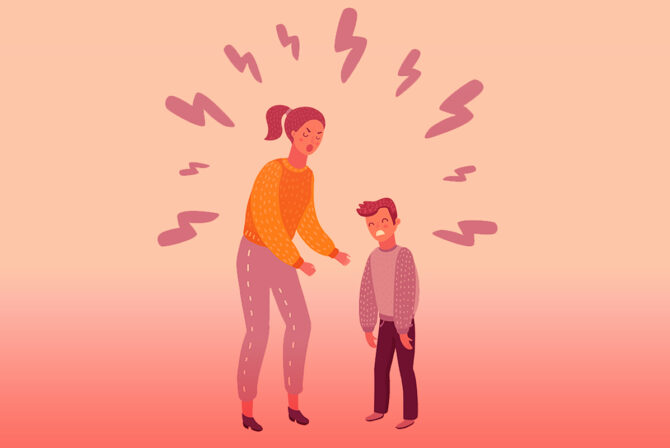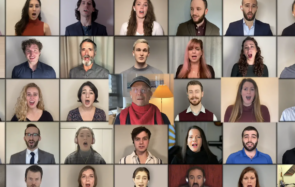For many American Jews, when we hear the word “shtetl,“我们的思想立刻转向Fiddler on the Roof.The 1964 hit Broadway musical and 1971 film is set in Anatevka, a fictional shtetl that depicts an insular, homogenous community in Ukraine in 1905.
毫不奇怪,特维和公司的故事引起了我们这么多人的共鸣,因为它如此美丽的细节shtetl生活,但最终以-剧透警报!-他们一家因大屠杀而流离失所,搬到了美国。在1900年到1924年间2 million Jewsfled to the United States, the majority from the定居地— the Eastern European region that included Russian Poland, Lithuania, Belarus (Belorussia), most of Ukraine, the Crimean Peninsula, and Bessarabia. Among those Jews who remained, many fell victims to antisemitic violence,纳粹大屠杀, and the suppression of Judaism in the Soviet era.
But here’s a little — and perhaps unexpected — history lesson: Not everyshtetl共享this tragic fate.
No, this isn’t a setup for a novel (though if your interest is piqued, be sure to check outThe Lost Shetl, Max Gross’s excellent book about a fictional Jewish town that mysteriously survived the century’s many tumults). Despite the exodus of Jews from the Pale of Settlement in the early 1900s, some Jewish shtetls in Ukraine and Moldova survived until the 1970s — and a few even remained up until the collapse of the Soviet Union in the 1990s.
An intriguing new documentary by Katya Ustinova,施泰特勒,描绘了这些被遗忘的犹太城镇的生活,通过居住在这些城镇的9个人的眼睛讲述。这部电影本周在俄罗斯电影周美国首映,它探索了一段既有revelatory and tragic.Ultimately, Ustinova shows that shtetls were a place of deep culture and of “neighborship,” as she called it.
“希望如此施泰特勒would attract people interested in their East European Jewish roots,” Ustinova told Kveller. “After all, 75 percent of people identifying as Jews came from this region.”
See the trailer here:
乌斯蒂诺瓦纽约电影制片人从纽约视觉艺术学院获得社会纪录片学位后,她在莫斯科的一个被她称为“文学世家”的地方长大。虽然她的剧作家祖父是犹太人,但直到她父亲(一位商人和艺术收藏家)在俄罗斯建立了犹太历史博物馆,她的家庭才与他们的犹太身份有了太多的接触在莫斯科2012年。
Upon discovering modern artifacts from Jewish shtetls, Ustinova and her father realized that shtetls lived and thrived longer than they had realized. ParaphrasingEat, Pray, Love作家伊丽莎白吉尔伯特,乌斯蒂诺娃告诉科维尔勒“一些故事只是等待被讲述。”苹果beplay
She added: “No one in the U.S. would think to tell stories about shtetls.”
但乌斯蒂诺娃意识到,苏联犹太人渴望分享他们与施泰特生活的经历。因此,在2015年,电影制作人拜访了几位散居在世界各地的什特尔居民。
第一对夫妇施泰特勒focuses on — Volodya and Nadya — are not Jewish. They are Ukrainian farm workers who still live in a former Ukrainian shtetl. They had such fond memories of their neighbors that they began to adopt Jewish customs, likemaking matzahbrei. Now in their 70s, they live in a home that used to belong to Jews — they even kiss the mezuzah when they enter. Volodya reminisces that his Jewish neighbors were “the first to help” with matters of intellect or money. (Yes there may be some stereotyping there — perhaps due to faulty translation, as the film Russian with English subtitles — but哇哇哇.)
Another character, Vladimir, converted to Judaism after his mother, who is honored in Israel’s Yad Vashem Holocaust Memorial as a国中义人在大屠杀期间庇护了几十个犹太人。他反思了在什特尔与犹太邻居共度良久的经历,以及犹太文化是如何成为他自己社区的核心,以至于在他成长的过程中,他的非犹太母亲为他烤了香肠。弗拉基米尔现在住在约旦河西岸,开始了一个东正教犹太家庭,现在包括孙子孙女。
Isaac, who was 95 when he was filmed, grew up nonreligious with Jewish roots in a Ukrainian shtetl. While Isaac was a “pioneer” — or, member of the Communist Youth Organization — which forbade any practice of religion, his Jewish grandfather insisted that he have a bar mitzvah ceremony. Remarkably, Isaac also fought forthe Soviet Union在第二次世界大战期间——最终成为一个营的参谋长,与他的兄弟鲍里斯在同一战线作战。艾萨克指出,“20多万苏联军官是犹太人。最近才得到承认。”
Incredibly, Isaac did not share the fate of many fellow Jews during this era — like Emily, who tells the story of narrowly escaping a concentration campduring the Holocaust. She grew up in a Ukrainian town,Khmelnik, whose Jewish community dates to 1565. In a clip on the施泰特勒在Instagram页面上,艾米莉讲述了她的朋友,一位乌克兰警察局长的非犹太妹妹的忠诚,她在家人躲藏的时候给家人带来了食物。
可悲的是,在电影拍摄的五年里,很多人施泰特勒’subjects, including Emily, have passed away. As such, Ustinova feels even more lucky to have captured their words and faceson camera. Ultimately, the film celebrates the spectrum of experiences of Soviet Jews, and as Ustinova said, it demonstrates to American audiences “that the world of their ancestors actually outlivedFiddler on the Roofand the war and the Soviet Union.”
Ustinova is hosting a Q&A with Russian Film Week today, Wednesday, at 8 p.m. which is free to register在这里. 虽然这部电影还在电影节期间,但你可以通过注册俄罗斯电影周(Russian film Week)来观看,乌斯蒂诺娃希望这部电影能很快在美国以视频点播的形式发行。从中观看更多剪辑施泰特勒,包括一些没有进入电影,你可以看看电影的Instagram在此处翻页.
Header courtesy of Russian Film Week USA








